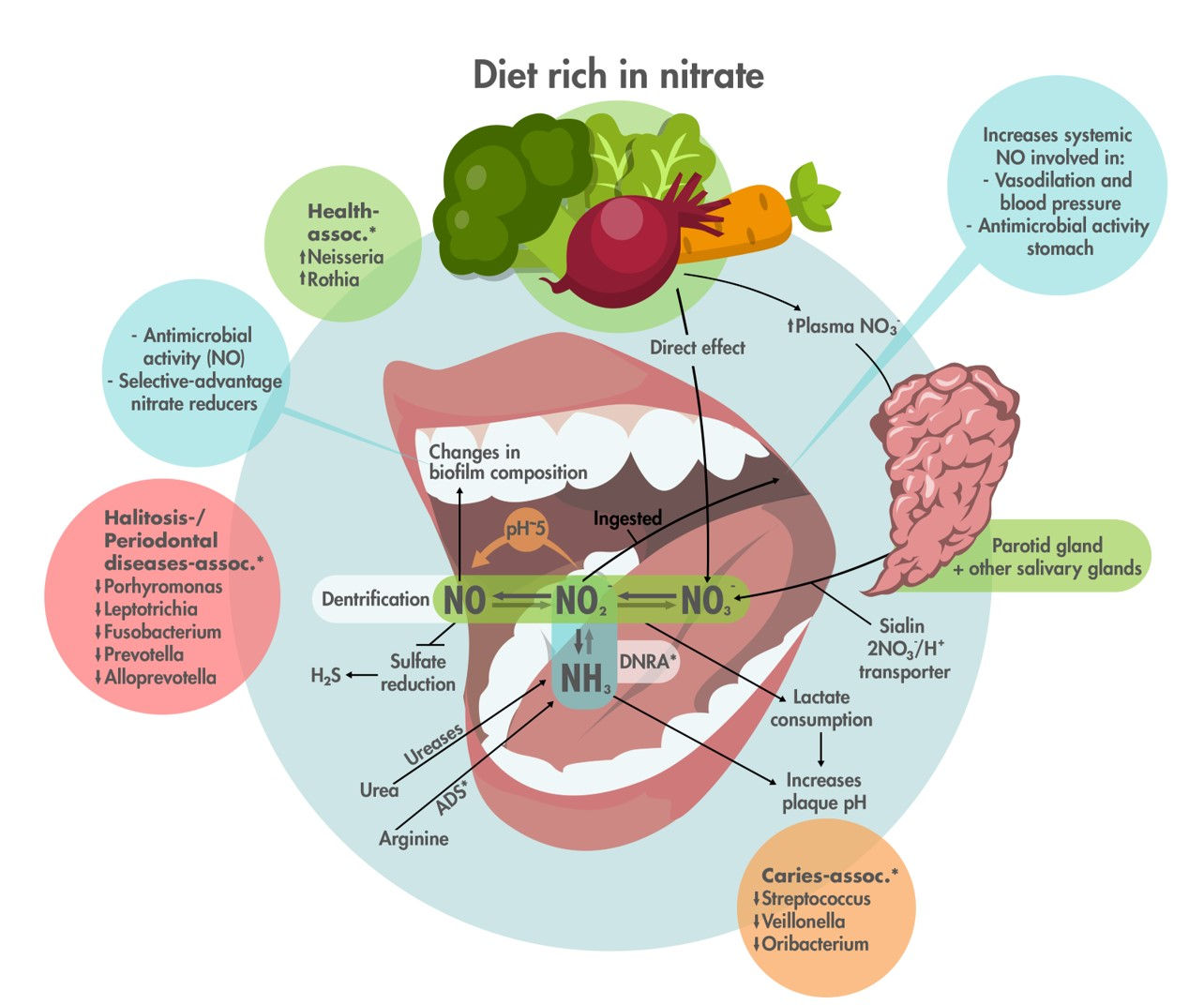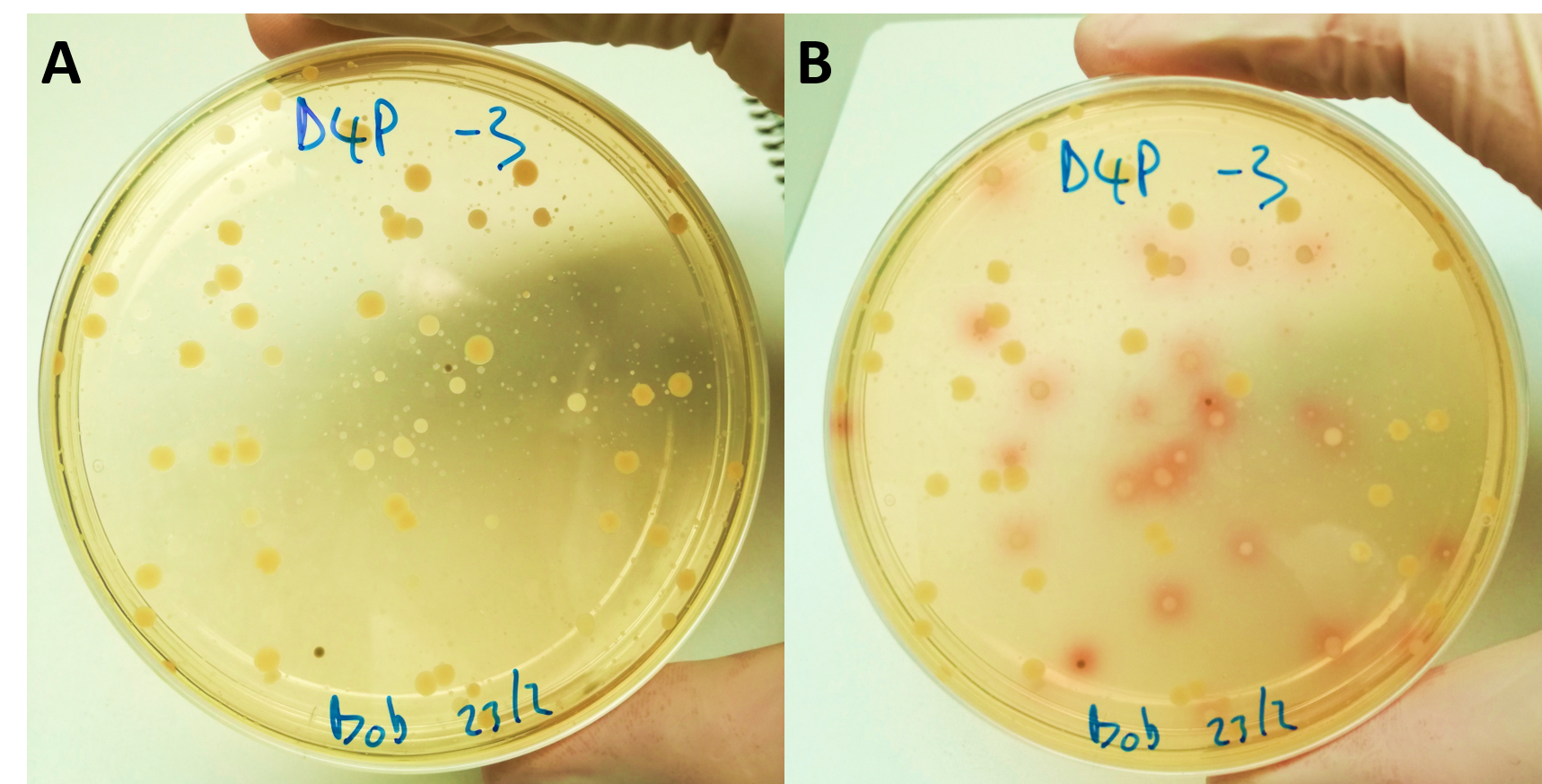|
Nitrate as a prebiotic to improve oral health
Nitrate is a molecule naturally present in plants that certain bacteria in our mouth reduce to nitrite. It is estimated that we obtain more than 80% of nitrate from vegetables – a food group associated with many health benefits, lower disease prevalence (including cardiovascular diseases, cancer and diabetes) and longevity. Vegetables that are high in nitrate, include beetroots and leafy green vegetables, such as spinach and lettuce. Evidence exists that the reduction of nitrate to nitrite by oral bacteria can contribute to some benefits for cardiovascular and metabolic health by increasing the levels of nitric oxide inside our body. For example, dietary nitrate can reduce blood pressure, improve endothelial function, increase sport performance and have anti-diabetic effects. The focus of nitrate research has been on those cardio-metabolic effects, but nitrate inside the oral cavity can also have different positive effects. For example, nitrate reduction by oral bacteria limits oral acidification when sugars are consumed (i.e., the main factor that causes caries development) and is associated with a lower caries incidence. Additionally, it has been shown that nitrate decreases gingival inflammation in patients with chronic gingivitis.
In our group, we are interested in mechanisms that can lead to the beneficial effects of nitrate on oral health (see Figure 1). These include changes in microbiota composition and activity in the presence of nitrate, lactic acid (the main acid involved caries development) usage by nitrate-reducing bacteria, ammonia (a weak base that can prevent acidification) production from nitrite by the DNRA pathway, the antimicrobial activity of nitric oxide, and the inhibition of volatile sulphur compounds (VSCs) production. In published and ongoing in vitro and clinical studies, we are exploring the effects of nitrate as a prebiotic and nitrate-reducing species as probiotics to improve oral and systemic health. So far, we have confirmed several of the potential mechanisms that make nitrate a health-promoting molecule inside the mouth. Additionally, we observed that nitrate increases the oral health-associated nitrate-reducing bacteria Rothia and Neisseria. We isolated different Rothia species (Figure 2) and are exploring the possibility to use them as probiotics.
Nitrate as a prebiotic: our findings and background information
Figure 1: Summary of health-associated mechanisms stimulated by nitrate consumption. For full description and more information, see Rosier et al., 2020; Scientific reports, 10(1), 12895.
Certain applications of nitrate as a prebiotic and nitrate-reducing species as probiotics for oral health were patented by FISABIO (kindly see this video with English subtitles). For more information, also see the news articles in Dentistry Today and News Medical.
Figure 2: Isolation of nitrate-reducing isolates using the Griess reaction that gives the reduction product (nitrite) a red color. This is dental plaque of a healthy donor incubated with nitrate before (A) and after (B) staining. The colonies with a red color produce nitrite, which in most cases results from nitrate reduction.
Participants: PhD. Bob T. Rosier, Dr. María D. Ferrer García, Dr. Miguel Carda, Dr. Carlos Palazón
Selected publications:
- Rosier B.T., Palazón C., García-Esteban S., Artacho A., Galiana A., Mira A. (2021) A single dose of nitrate increases resilience against acidification derived from sugar fermentation by the oral microbiome. Front. Cell. Infect. Microbiol. 11: 692883.
- Rosier B.T., Moya-Gonzalvez E.M., Corell-Escuin P., and Mira A. (2020). Isolation and Characterization of Nitrate-Reducing Bacteria as Potential Probiotics for Oral and Systemic Health. Front. Microbiol., 11, 555465.
- Rosier B.T., Buetas E., Moya-Gonzalvez E. M., Artacho A., Mira A. (2020). Nitrate as a potential prebiotic for the oral microbiome. Scientific reports, 10(1), 12895.
- Rosier B.T., Marsh P.D., Mira A. (2018). Resilience of the Oral Microbiota in Health: Mechanisms That Prevent Dysbiosis. J Dent Res 97(4):371-380.










